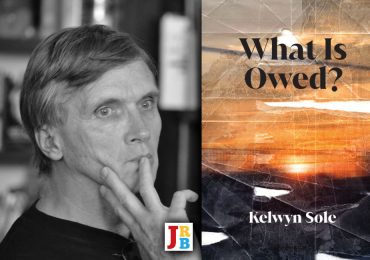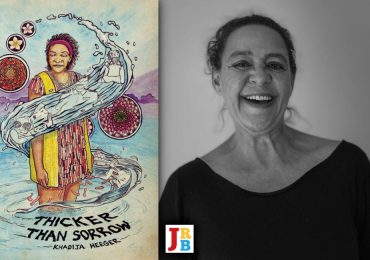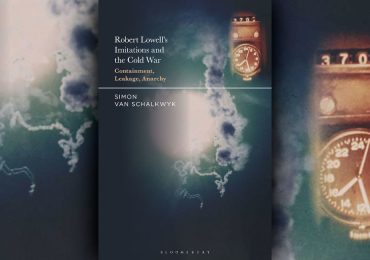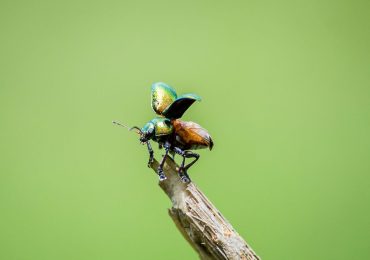The JRB presents Kelwin Sole’s Introduction to Maxwell the Gorilla and the Archbishop of Soshanguve, an epic poem by the late Angifi Proctor Dladla.
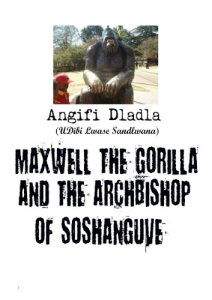
Maxwell the Gorilla and the Archbishop of Soshanguve
Angifi Proctor Dladla
Botsotso, 2024
Maxwell the Gorilla and the Archbishop of Soshanguve is available to read in its entirety on Botsotso’s website here.
The publication includes introductions by Botsotso and Kelwyn Sole, remarks on the editing process by Dr Danya Ristić-Schacherl, as well as an essay by Vonani Bila and Olufemi J Abodunrin, which gives some insight into the work’s background.
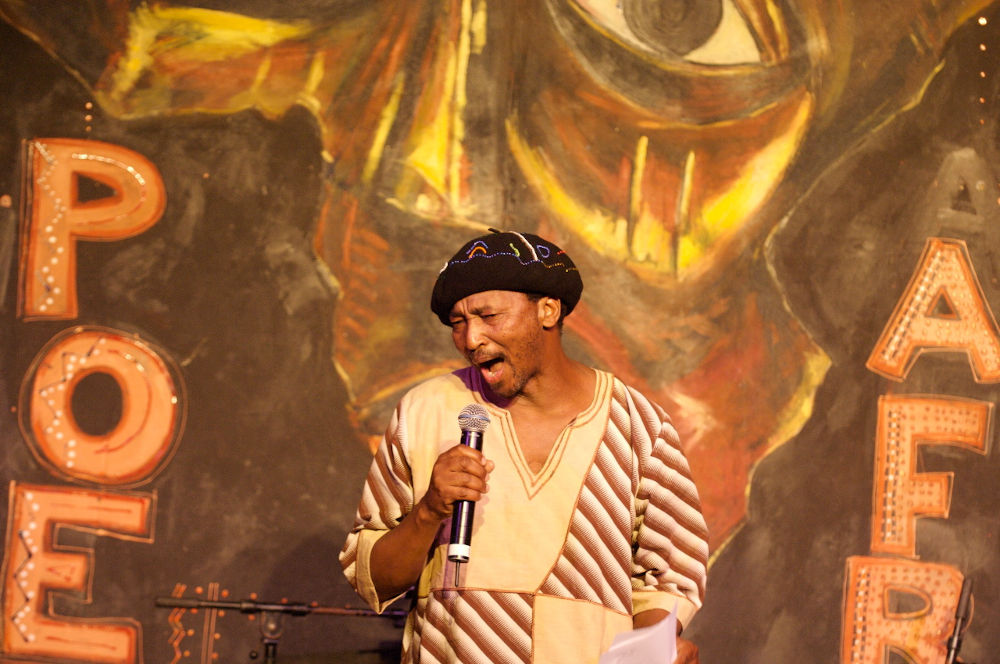
Read the excerpt:
~~~
Introduction
Kelwin Sole
Biography and Earlier Work
Angifi Proctor Dladla was a poet, playwright and poetry editor who established a formidable reputation during his lifetime. Born in Thaka township in 1950, he lived most of his life in Katlehong, south-east of Johannesburg; and until his death was a significant presence in schools and community settings there, as well as in neighbouring townships such as Thokoza and Vosloorus. Indeed, this area informs quite a number of his poems and plays. However, conceptually and philosophically his work reaches beyond any one genre of literature or any detail of time and place.
With regard to his own publications, he published two poetry collections in English and one in isiZulu, as well as eight plays. In addition he edited and published a multilingual anthology entitled Wa lala, Wa sala (‘You snooze, you lose’) containing the work of students, members of the community and inmates from Boksburg Correctional Services; and Reaching Out: Voices from Groenpunt Maximum-Security Prison, a collection of prisoners’ poems, short stories, interviews and prose. In addition, his work has appeared on many websites and in many anthologies, and he remains one of the South African poets whose work has a voice and range that spans audiences ranging from his own community to academic and international readers of poetry.
It should be noted that he never forsook the people among whom he lived and whom he has served as schoolmaster, anthologist and creative writing teacher. While this can be seen in his contributions to creative writing projects and journals, it becomes even more apparent when one looks at his activities on the ground as a literary and cultural activist—among other achievements, he founded the Community Life Network, the Akudlalwa Communal Theatre, Chakida Publishers, E.R.T.O.N and Boksburg Progressive Presses, Bachaka Theatre, the Community Life Network and the Femba Writing Project at Groenpunt Prison. In other words, Dladla was and is an example of that rare human being whom (particularly in the years of struggle against apartheid) used to be called an ‘organic intellectual’; a beacon of ethical demeanour and social commitment in troubled times.
A lifelong Pan-Africanist, Dladla always maintained a belief that poetry should be seen as a form of activism and followed these directives himself. During the State of Emergency in the 1980s he changed his name to Muntu wa Bachaki or Udibi Lwase Sandlwana to elude the authorities. Many of his early poems confront the reality of apartheid and the racial and material destruction it wrought on his community and black people generally. He is one of a number of South African poets whose lifetime and experience spans the deadly and dangerous years of resistance to apartheid as well as the subsequent upwelling of hope for the future that followed its demise. Along with many such poets, his later work exhibits a growing disillusion and anger as these hopes were suffocated by corruption, greed, maladministration and the many abuses of power wrought by the current ruling class and white and black elites. One of the recurring themes in his work is this process of disillusionment in current leaders, set against the anger and methods of resistance and survival that township residents and others have employed to try and combat this. In an interview with Tom Penfold, he spoke of how angry and disaffected people had become, noting that the ‘poet as a responsible citizen cannot be neutral and soft while the politicians are increasingly binge eating and hoarding more than they need amid dire poverty.’
In another interview (with poet Joan Metelerkamp) he opined that poetry: ‘demands a search for the essence of things […] Poems are with the people, they must remain there’. While he was willing to write poems to celebrate special events in the lives of people in his community, he was devastating in his critique of praise poets who embed themselves with figures in power: ‘I don’t turn despots into roses and idols. Where are those who glorified Gqozo, Vorster, de Kok, Mobutu? They die with the dying, they disappeared with the disposable.’ Thus, he stays true to the details of everyday life as it is experienced by those ‘left behind’ by South Africa’s transition to democracy, striving to listen to their needs while filtering these through a voice and vision which is entirely his own.
Throughout his life Dladla was critical of the tendency in modern life for humans to lose their sense of neighbourliness due to the burgeoning of materialism and soulless calculation. He believed that the South African ideal of ubuntu (human compassion and fellow-feeling) could be found in inhabitants of countries right around the globe. Art and literature, and especially teaching, were always seen by him as methods for healing and promoting individual self-confidence. One must stress, therefore, the manner in which his identity as a poet was always intertwined with that of teacher, editor and facilitator.
This emphasis on poetry as psychologically and socially restorative becomes very noticeable in his later work. In pursuit of this goal, his evoking of emotionally regenerating oral forms of wisdom and expression are crucial. It is no coincidence that one of his projects was the Femba Writing Project, because Ku Femba, the channelling away of evil spirits and traumatic experiences by diviners (of whom his aunt was one) informed his practice of poetry: in so doing highlighting one of poetry’s potential roles as that of a psychological response—a medium for healing—for insistent socially and politically induced traumas.
In an interview with poet Vonani Bila, Dladla observed that during the process of divination and the ‘casting out’ of evil spirits, the diviner acts not only as an identifier of problems and catalyst for their removal in people, but also as ‘as a psychologist. That really worked, their problems were solved.’ The poet, through poems and teaching, can analogically restore a sense of meaningfulness and actional self-assurance to those who have been rendered victims for far too long, and do this using forms of knowledge and expression which are less culturally alienating.
In various interviews Dladla spoke of a number of influences on his writing, especially the South Africans Es’kia Mphahlele, Arthur Nortje, Mazisi Kunene, Keorapetse Kgositsile and the isiZulu-language poet and playwright DBZ Ntuli. He also referred to wider poetic influences that ranged from Léopold Sédar Senghor, Okot p’Bitek and António Jacinto to ancient Egyptian poetry. As a result, his own poetry is stylistically striking, making use of formal devices from both oral and written poetic traditions and different genres of written poetry, often weaving these into complex webs of utterance.
The Girl Who Then Feared to Sleep (2001) a collection of English poems, garnered widespread praise from critics, who noted its wide range of styles, voices and themes, its raw power and experimental freshness. The poet showed himself to be the master of the concise, surreally tinted but devastating image of the real, and also of poems which could meld meticulously observed and at times troubling aspects of township life with a strong personal voice, engendering a lyricism which was both immediately striking and an invitation to further contemplation.
Many of these characteristics are taken further, in terms of style and content, in the later Lament for Kofifi Macu (2017). Here is a poet who compels us to look at events and issues from which our first instinct may have been to turn away. This collection shows a wide focus; ranging from poems about Fifa and the Marikana massacre to those about people neglected in the community, poems bitingly critical of the new black elite and, very strikingly, a number of arrestingly plangent love poems. His control of form and his ability to look at any topic from all angles has meant (in Metelerkamp’s description, made to him) that he maintains a ‘sense of objective observation at the same time as intense personal connection … grace and pain coexist in your work. You manage to observe without being overwhelmed.’
There is one particular formal aspect in this later collection which seems to me proleptic, making apparent a style which reaches full fruition in the epic poem which follows. This is the manner in which some of his shorter and mid-length poems move from the declarative and descriptive techniques of the modernist lyric into oral-inflected song forms. Interwoven with this, there is a movement from a stark detailing of the vicissitudes of contemporary black experience (especially for poorer people) towards a gesturing towards the spiritual dimensions of traditional belief systems, mythologies and communal wisdom against which these vicissitudes are measured—in other words, those aspects of black philosophies and practices which can act as a form of succour, wisdom and resistance to the hegemony of Westernisation and the burgeoning of an uncaring, self-centred consumerist society.
The Epic
Maxwell the Gorilla and the Archbishop of Soshanguve takes as its starting point the 1997 shooting of Max the Gorilla in the Johannesburg Zoo by a criminal who, while fleeing the police, entered the gorilla enclosure. The criminal, Isaac Mofokeng, entered Max’s enclosure and shot Max twice, who retaliated by seriously injuring the man and also injuring pursuing policemen. This incident was picked up by newspapers and other media, who made much of the event as symbolic of the rapid burgeoning of crime in the city and the courage and steadfastness required to resist this, as occurred in Max’s willingness to defend his ‘home’ and mate. A bronze statue of Max was subsequently erected in the Zoo. Dladla, however, does a great deal more in his poem, via a narrative of future projection which soon enters the realm of the fantastical. Max thereby accrues a symbolic meaning through many layers of philosophical and cultural commentary and speculation.
Though called by his detractors ‘Mr. Shu-Shu-Shut-up, / jou Boesman-toordokter-van-die-woestyn’, the poem’s narrator is of ancient lineage: he is Qum, ‘remnant of hunter-gatherers / whose epics are in the tongues / of rocks. I, story tracker, / three-legged like an African pot, / have lost everything, everything; / but not stories’. Thus the reader is aware, right from the beginning, that the story being told has resonances in the past. It begins, as epics do, in heroic terms. The hero and his associates are all positively drawn (Max himself can ‘look down the other side of a sandton suburb wall’; and the birth of the Archbishop of the title is, we learn later, the stuff of legends). Their opponents are depicted negatively: the mugger wears ‘Zinj’s clown embroidery … were he a girl / his paunch would have sympathisers’; while the police attempt to control the scene degenerates into slapstick in the best tradition of the Keystone Cops. However, the poem’s documentation of this event, and the media frenzy which follows, is transformed very quickly into a poem which spices its heroic stance with humour and satire.
The reader is exposed to the prevarications, lies and excuses prevalent in our politics and our daily lives. In its course the poem lays bare both the discourse whereby the country’s post-liberation oppressors attempt to disguise themselves as liberators, and the competing discourse whereby the pre-liberation oppressors seek to disguise both their ongoing power as well as their complicity in the country’s ailments: blame-shifting is common. It also takes digs at the media itself, for its tendency to raptly pay attention to superficial scandals and lifestyles at the expense of generating a deeper critical understanding of events: at times in the early sections of the poem, the media come across as nothing so much as a demented Greek chorus. In this vein, a constant mockery is made of current official and media perspectives. The poem’s satire is enriched by a list of memorable, often grotesquely, named characters one discovers in passing, such as Captain Draai-Jou-Poephol/Turn-Your-Fart-Hole, Lekker Ding Tamboertjes, Zamani Zembe-Nyoka and Kalkoen Koppesneller: even a past apartheid President, Grotesk Krokodil, gets a mention!
As a result, Maxwell the Gorilla and the Archbishop of Soshanguve is simultaneously playful and incisively social. A mordant critique of South African social and political folly, it magnifies and defamiliarises current behavioural norms until they are revealed in their full absurdity. The characters use the shooting of Max the Gorilla for their own purposes: everyone jumps, hilariously but revealingly, on the bandwagon. Prompted by human folly and obsession, the presumptuousness of the new and old elites, and the self-serving actions of politicians and other public figures, come more and more into question as a concatenation of events unfolds and spirals ever more out of control. South Africa comes across as a nation which—while so full of promise after 1994—seems to be shackled by false solutions to national problems, fed only by competing self-interests.
South African poetry at the moment is overwhelmingly dominated by the lyrical ‘sound-byte’ of personal expression, both in performance and on the page. Satire has tended to be a form less appreciated by the doyens of literary taste in South Africa, despite being a constant popular presence in our literature. In this regard, Dladla’s poem is refreshingly different. Moreover, it is of extensive length; and I think it is as true to say that the long, written poem is not common in post-apartheid South Africa, one or two practitioners aside (such as Vusi Mavimbela and, more recently, Joan Metelerkamp). This was not always the case: less than half a century ago poets such as Mazisi Kunene and Mongane Wally Serote made ample use of the form in its written dimension and, if one goes further back in history, a scattering of other poets have tackled it through the years—John Wheatley, Roy Campbell, Frederic Brooks, Anthony Delius and others. Perhaps this poem’s closest confrère is Delius’ The Long Division; a long satire published well over half a century ago on the madness of apartheid South Africa’s parliamentary politics.
One of the noticeable characteristics of the epic’s history, seen constantly in its manifestations around the globe, has been that it is a genre moving with some ease between the historical and literal on the one hand and the figurative and mythopoeic on the other. The African epic has been no different. Dladla’s poem bases itself on one event, not even seemingly of national importance: but it slowly and surely moves into a realm that is eventually cosmic, peopled with mythic and even extra-terrestrial figures. In addition, the epic as a form has the flexibility and the space to encompass other genres of poetry and other forms of utterance. On closer analysis, there are many elements that make up the form of Maxwell the Gorilla and the Archbishop of Soshanguve. In it are to be found strands of the heroic as well as mock-heroic, the elegiac, narrative, parables and maxims, social commentary and analysis, lyrical refrain, dialogues, palimpsests, call-and-response, and praise poetry. Add to that its sheer audacity and inventiveness of language, its use of onomatopoeia and neologisms, the controlled changes in tone and rhythm, its scintillations of humour, its sweep of subject matter and scope of concept, and it becomes easily apparent why this poem suggests, in so many ways, new possibilities for South African poetry.
Yet these remarks do not encompass the full scope of what is in front of us. For Maxwell the Gorilla and the Archbishop of Soshanguve is unlike any other South African poem I have come across. The epic-length poem is significantly reinvigorated, and its generic conventions extended. For it turns out that Max is not just a denizen of Johannesburg Zoo; he is Max the Gorilla, ‘Maxwell Ebobo, he who spoke Afrislan,/ … He who called Blacks the Zinj; Zinj kids, in town, / dubbed him Grandpa Ho-Ho’: a figure who triumphs over his adversity, not only from the bullets of the mugger but also from the dismissive and wounding tongue of an unsympathetic advocate. Despite finding himself, at the beginning of the story, incarcerated in a zoo, in a world where the climate is bewitched, and ‘and winter is no longer winter … on the third year after / Year Zero of the fall of the Volk,’ Max turns out to be (as the Minister of Arts and Culture notes) ‘… a key opening up a chink / a chink through which I see a beam, a beam of light. / … a key opening up a novel aspect, / an aspect through which I sense other dimensions.’ Indeed, his encounter with the mugger Jerrie Daaimahn, seemingly just an everyday occurrence in a crime-beset city, is the harbinger of change for the ‘Capital of Culture / further cosmopolitanised with a fresh / flavour and attitude.’ Although the story is firmly encased in national and continental history that have formed contemporaneous events, one soon realises that it reaches via the progression of the poem into the realms of the archetypal. Even Max’s assailant is not simply an individual; in one aspect he is ‘Daaimahn’; an everyman. There is a literal story being documented, but as we read further, we find that it is a matrix for other perspectives and other stories which can be derived from it, from a myth of creation with strong San overtones to a far distant, edenic future.
Many of the poets in South Africa in the last thirty years seem to be weighing up an ideal future world promised in 1994 as against the stark reality of today and finding the latter wanting. The assurances made in the country’s new Constitution are measured against the burgeoning of corruption, poverty and double-dealing. Dladla does this, too, but goes further.
In all literature of a satirical bent, the poet mobilises an underlying narrative voice and guiding hand which exposes the ridiculousness of human behaviour, in order that it can be opposed by the forces of reason and justice that will renew the social order. An irony that wishes to compel reason, yes; but also, in Dladla’s case, there is an encompassing humanist, spiritual urge which strict evocations of ‘rationality’ cannot even begin to fully encompass. There is a strongly positive impulse and voice that can be descried throughout, and a sweep of history—from the earliest South African communities until now—that goes far beyond any previous South African satire. As the poem progresses, the reader can see that it never becomes caught in the binary of undue praise versus sweeping disapprobation.
For this is a poem of ideas. Its themes converge onto the terrain of ethical and philosophical debate, deeply questioning our complacent habits of thought and behaviour. It is striking how many debates between opposing views take place in the poem: debates on the usefulness (or not) of silence occur between the Archbishop and the doctors; debates between political parties on the subject of Max on television take place; a debate between Worsie van der Berg and Cyclone Demonia breaks out about who is culpable for the state of the country.
This richness of debate is most noticeable in the masterful Third Movement, which witnesses the titanic struggle between opposing advocates Phiphidi and Shiburi as they argue about the exact status of Max. Even though one side eventually wins, what is noticeable is the rhetorical adeptness of both lawyers: their arguments are not flip ‘position-statements’, but logically and extensively argued. It is hard for the reader superficially to accept one rather than the other, until such time as both arguments have been internalised and seriously mused upon by the reader: even though the reader is, eventually, expected to favour one.
Elsewhere, similar tactics are employed to secure such an end: Worsie’s argument with Cyclone allows both sides to make telling points which have some partial validity; but the event clearly shows how an argument couched in such terms will never be resolved to the satisfaction of both and will end in the opponents resorting to other means of persuasion. Thus, the reader is compelled to go through their own standpoint and beliefs to arrive at a clearer, hopefully more informed, position. Therefore, while this poem is clearly stating a position, the debates never devolve into the two-dimensionality of self-satisfied ideology. Like contemporary South Africa itself, there are thronging voices, often in angry conflict with each other, being heard. This is necessary: as the Premier of Gauteng attests after Demonia has attacked Worsie: ‘For God’s sake, all of us were wounded; / he must forgive and forget and hence, be cleansed.’ Importantly, though, the direction of these arguments passes through, and move away from, any facile, self-interested rhetoric. Consequently, if the poem does eventually come down on the side of diversity, tolerance and peace, it is not the easily-arrived-at positions invoked by erstwhile politicians of the ‘rainbow nation’; but a future that can only be arrived at through—rather than despite—strong emotion and dissension, and that requires an opening up of the human psyche to new possibilities and solidarities that involve, but go further than, the human.
The poem directly repudiates social and all other forms of Darwinism, as well as all doctrines and religions which subscribe, in effect, to notions of power and hierarchy. In service of this, Dladla gives free rein to a range of intellectual resources: just as one example, Shiburi mobilises examples from many quarters in dismissing his advocate opponent (‘He has ignored Magqubu Ntombela, / the ranger and guide who regards animals / ad birds as his brothers and sisters. / He has dodged Dian Fossey / … He has ducked Derrida / … he has sidestepped feral children—/ Amala and Kamala, the Wolf Girls of India / and Oksana Malaya, the Girl Who Thought She Was a Dog, / and François Truffaut’s L’Enfant Sauvage. / And, he has blatantly avoided modern science, / especially star-like cells and genetic evidence / … This is circumvention bordering on criminality.’).
What comes to view is the suggestion that both logic, and superficial forms of faith, are not sufficient: right at the beginning of the poem, the Archbishop pleads with the officials and media ‘…not to voice the voice of reason, but to listen to the voice within. / The voice within / has no arrow, no sting, no venom, / for it feels for another soul, / sharing eternal identity and affinity. / But the voice of reason is bureaucratic, / cultural, historical, political, fanatical—/ awash with greed, solipsism, chauvinism, / deviousness, rancour, intolerance, arrogance.’ Paralleling this is an awareness that tokens of belief will not save anyone in themselves; nor will any external source of belief that has not been internalised: Constable Manyisa with his crocodile tooth in a locket, and Jerrie with his grigri, both learn this to their discomfort. Eventually, this is a poem that pleads for a new consciousness of being, an empathetic gentleness: the Maxian maxim early in the action that one should not ‘own and destroy / what you did not create’ points in this direction; as does the Archbishop’s later remarks when he points out that the universe does not judge, reject, retaliate or disempower.
Thus the teaching of the poem is not confined to the political, the social or even the human. Through a series of inversions, the poem delves into the domain of animal rights and the rights of those creatures with whom we share the earth. They are held up both as a mirror to the folly of human behaviour, and as a plea for a tolerance and understanding within a unity-in-diversity. This ‘new consciousness’ is, in the poet’s view, as old as the continent itself: the village of Hasha-hashen, for instance, has already learned to use the forces of nature as a benevolent counter to evil witchery; and is wise enough to learn from animals. An embracing Pan-Africanism informs and is embedded in the poem, but one which takes note of all the continent’s beings. Any unity, it seems to say, may begin in South Africa; but will need to spread outwards to include not only all human beings but also all the life forms with which we share the earth, imbrued with a wisdom that embraces natural processes and change. Frequently, animals in the poem behave in a more humane and dignified fashion than the human characters, who revert to the supposedly feral with some aplomb. Overall, the poem is a deeply felt ecological statement, and simultaneously a strong plea for tolerance and respect.
What emerges thematically from the use of elements of the heroic against the mock-heroic is a synthesis which is neither, and transcends both, by becoming a future projection into a world charged with wisdom, gentleness and empathy for all sentient beings. The heroic is situated in its correct place, amongst the down-trodden and little regarded, where human cannot be separated from the human, the human from the animal, and the natural given its rightful ascendancy. The natural cycles of the earth in turn open up into the universal, and further into ‘the multiverse.’ As the poem progresses, its subject matter takes on global, then cosmological dimensions. The human and animal characters become involved with (and learn from) the truly alien and extra-terrestrial. Thus, as Dean of Ape Studies, Maxwell Ebobo is situated finally in an Academy of which the purpose is the study of ‘the curriculum of the soul.’ More widely, a world is evoked and desired through this poem where nothing is alien and nothing is impossible: a world of absolute truth, knowledge and consanguinity.
The poem emerges, in the final instance, as a paean to creation and collaboration and, more precisely, a collaboration in which all created beings may partake. The poet develops into both critic and visionary. Not only has our present emerged in all its unpalatable and contradictory reality, but the possibility of a better future, and the urge towards change, have left indelible—and potentially transforming—traces on the reader’s consciousness. The Russian visitor Yegor finds out that the Kyalami Earthlife Academy has ‘extradimensional mentors’, where gadgetry is unnecessary and language non-verbal, where ‘‘everything is / possible if you know the laws of the Universe’ and it becomes conceivable to meld into an ‘EARTH FAMILY / SIMUNYE—NO DUALITY / INTERSPECIES COMMUNION / CRADLE OF A NEW LIFE.’
This future vision is seen as a form of ‘Afromagic’ which has a foundation of belief influenced by Egypt, African sculptures and masks, and San epistemology and ontology. Thus the poem can be seen to use a current event to look backwards into history and myth, and forward into a fantasised future. In its process of exposition, it demonstrates that Dladla’s imagination has brought forth a creation of startling originality and risk-taking. It is a unique event in South African poetry and, while I am reluctant to endow it too emphatically or blur its specificity within the stricture of generalising and stereotyping academic labels, it may be regarded as one of a growing number of what are now labelled ‘Afrofuturist’ works that have emerged over the last decades. In this vein, it takes its place among works by writers who would include Amos Tutuola, DO Fagunwa, Emmanuel Boundzéki Dongala, and—across the oceans—Samuel R Delany, Octavia Butler, Nnedi Okorafor, Helen Oyeyemi, and others. At the same time, it carves its own path: and is a significant addition to South African poetry, illustrating new forms of expression and insight for the South African literary world.
In an interview with Michelle McGrane, Dladla suggests that: ‘To me poetry is the language of the soul, the lingua franca of dreams … I am just a matchbox for a person’s inner match to unleash his or her human goodness.’ Maxwell the Gorilla and the Archbishop of Soshanguve is, in a strong sense, a poem that delves into the lingua franca of dreams. All this, and much more: it is a poem that takes the possibility of human goodness into regions of humour and philosophy, of future projection, of linguistic and imagistic dexterity: in other words, into realms never before attempted in South African poetry. Moreover, the word ‘human’, indeed, can be seen as redundant as a mark of value: because this is a world where all creatures come into purview and begin to flourish. As one reads, ‘human’ ceases to be a useful descriptor unless it is interwoven with notion of fellow-feeling that embrace all things with which we co-habit the planet. Particularly in a country where South African politicians—even those who claim to serve the environment—increasingly seem to regard animals and other creatures in terms of their use value (‘bush meat’), it is illustrative that it is a relative of the human race, and not the human race itself, that is the ultimate benign philosopher and educator.
All those of us who knew him, and were influenced by his work and selfless presence, were saddened by Angifi Dladla’s death in 2020. Without doubt this groundbreaking epic poem will assist in the creation of a wider range of readers and admirers of his work.
Kelwyn Sole
De Beers Professor Emeritus
University of Cape Town
Cape Town, March 2024

